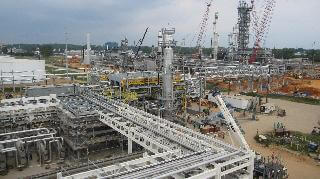He notes that most pumps within these units will be pumping hydrocarbons or sour (hydrogen sulfide-containing) water. A seal failure poses a fire hazard risk in the case of hydrocarbons and a noxious gas release in the case of H2S.
As essential assets, the pumps can be monitored for parameters such as seal failure, cavitation, impeller damage, excessive temperature and vibration, low and high fluid levels, and leak detection. Wireless devices are available to monitor all these process and equipment-related conditions in real time online.
Gary points out that heat exchangers, air-cooled condensers, and fired heater blowers can also be monitored wirelessly with the pump rack and its associated branch wireless infrastructure in place.
Rather than look at the cost of infrastructure (meaning the number and placement of wireless gateways connected to the central control system–everything except the instruments) for any particular process unit or parts of a process unit, lay out and cost the plan to do the entire refinery plot plan in the area of the pipe racks within the process units—say extended 50 feet on either side of the centerline of the rack as a design basis. The pipe racks between storage areas and the process units can be omitted from coverage for this exercise.
This provides a solid basis for future considerations as well as a path for eliminating any areas where the asset monitoring or economics of wireless coverage is not warranted. Potential units to monitor the essential assets include crude and vacuum, naphtha hydrotreating, naphtha reforming, distillate hydrotreating, hydrocracking, delayed coking, amine treating, sour water stripping, sulfur recovery, utilities, and offsites.
With the wireless infrastructure in place, energy efficiency-related projects can be easily added on over time. One example is steam trap monitoring as highlighted in an earlier post, 2011 Emerson Exchange – Instant ROI with Steam Trap Monitoring.
Also, as highlighted in an earlier post, Online Wireless Field Network Planning Tool, you can use a web-based wireless planning tool to do a quick assessment of a wireless field network design at your facility.





